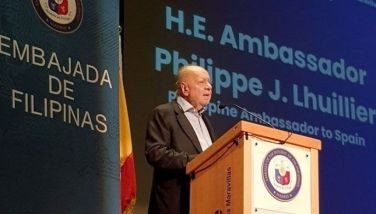Transferring technology, creating wealth
June 9, 2005 | 12:00am
These licensing offices are usually separate legal entities servicing either a single national university or a private university. There are also area-based TLOs that serve several universities and research organizations in a particular locality. They provide a range of services – patent applications, marketing, even business incubation – to individual researchers who choose to assign their inventions to them. On the other hand, companies have to pay membership fees to most TLOs in order to gain preferential access to undisclosed patent applications. More details are given by TLOs to an interested investor only after the two parties have signed a confidentiality agreement. A policy change in the future may require researchers to disclose inventions and assign patents to their respective universities.
United Kingdom: For a long time, commercialization of technologies from publicly funded research was the monopoly of the government through the British Technology Group or BTG. The BTG was subsequently privatized, and is now owned partly by several universities. These universities have, on their own, also commercialized their technologies without using BTG’s services. In particular, King’s College London and Oxford have their own research corporations. Before its privatization, the BTG also provided equity funding for academic researchers and institutions with marketable technologies. But with the growth of the venture capital industry, this function seemed redundant. The BTG is now focused entirely on technology licensing and sales.
Germany: Before 2002, university professors and their assistants had the "university teacher" privilege that gave them exclusive rights to exploit their patents. As a consequence, universities did not establish their own transfer units until a reform of the law required professor-inventors to transfer their rights to their respective universities. Six years before, the Ministry of Education and Research waived the government’s right to collect shares of the license income from government-funded researches and allowed exclusive licensing of technologies arising from them. To support these reforms, the federal and state governments then vigorously established in-house licensing offices, and technology licensing bureaus and companies serving several universities within a city or a state. With the recent formation of sector-specific IP management firms that specialize on certain technology areas, a new technology transfer set-up is evolving.
Australia: According to an Australian patent attorney whom I met in an international workshop, Australian universities traditionally own all the intellectual properties that they generate, unlike in most other universities. Thus, the problems of IP ownership as seen in the US that were supposed to be addressed by the Bayh-Dole were non-issues in Australia. Also, even the public universities are not subsidized by government funds. As a result, they are required to generate their own income from their activities and assets, primarily through university-owned corporations, like the UniSearch of the University of New South Wales. In recent years, exploiting intellectual properties has become the dominant contributor to total revenues generated by these corporations. As a consequence, these corporations have become more like patent management-type firms rather than full-blown business units.
ASEAN: Several universities, like those in Thailand and Malaysia, have established TLO-type offices and even university-owned firms/foundations (as in Australia) for commercializing technologies. A success story would be that of Thai Chulalongkorn University’s University Industry Relations Unit or UIR, which has responsibility not only for technology transfer but also for managing collaborative projects with industry and providing business incubation services to university staff and students. In its first year in 2003, it already earned 7.7 million Thai baht from its six patents. On the other hand, in Malaysia, many of these business units have not been effective because of lack of resources and appropriate skills.
Our own University of the Philippines has also been trying to develop an effective means of technology transfer. Over the span of two decades since it first formulated an IP policy, the various constituent campuses and the system administration have experimented with in-house IP offices, a not-for-profit foundation and, more recently, a technology licensing office. The UPLB-BIOTECH has its own patent agent. Based on my own research, UP has at present a total of 26 pending patent applications, and five pending utility model applications from its large campuses in Los Baños and Diliman.
Many of these patent applications had been filed even before the creation of the system-wide licensing office and are presently managed by different administrative units. It will take time before a more unified system evolves. UP may consider adopting the system used at the multi-campus University of California which is a decentralized system of independent licensing units from the different campuses and major laboratories, coordinated by a lean system-wide licensing office.
For other universities thinking of formalizing their IP policies and creating units for technology transfer, I hope I have been able to provide a wide variety of options and lessons. Some of the issues I discussed are unique to a multi-campus public university like UP and may not be relevant to others. Universities that are privately owned and financially independent may be more flexible in designing their own systems, unconstrained by government regulations. It may be that university administrators feel that their faculty is not yet producing enough research output to merit establishing TLOs. This is an important concern even in UP, where some people feel that not enough research is being done. To achieve economies of scale, perhaps an external TLO owned by a consortium of several universities may be an option.
BrandSpace Articles
<
>
- Latest
Latest
Latest
September 30, 2024 - 8:00am
September 30, 2024 - 8:00am
September 26, 2024 - 2:00pm
September 26, 2024 - 2:00pm
September 3, 2024 - 1:00pm
September 3, 2024 - 1:00pm
Recommended

























